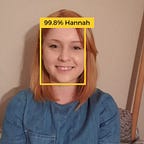‘Mad’ Machines: showing the creative ‘thinking’ of Artificial Intelligence
When it comes to advertising, I’m sure most people would imagine a brainstorming session in a room filled with creative minds crafting the next memorable catchphrase, trying to emulate the anticipation of a John Lewis Christmas advert. But just as automation has filled many roles previously held by humans, it may not be that shocking that the billions of synapses of creative minds bouncing ideas off one another have been replaced by a long series of 1s and 0s. Artificial Intelligence has pushed out the Mad Men.
Even though Thanksgiving isn’t celebrated in the UK, many will be giving thanks to the marketing gods that came up with Black Friday, and eagerly anticipating the sales for a brand new sound system just in time to drown out the in-laws over the holidays. We can leave the Americans to cook their turkeys and pies.
So when looking to have lines queue up overnight for the massive sales that seem to be a once per year occurrence, Dixons Carphone turned to Artificial Intelligence (AI) to create the best marketing campaign possible for the busy holiday pre-season.
The idea for this software came from the mind of Parry Malm, who set up Phrasee in 2015, after moving from Canada to the UK in 2006. Phrasee uses AI, deep learning and optimisation to ensure “Your Voice. Better Language”. Along with AI, computational linguistics makes Phrasee “the only tool of its kind to generate, optimize, automate, and analyze language in real time”. Their NLG algorithm allows Phrasee to create personalised and effective language for brands by incorporating previous campaign ideas and already existing brand style, tone and target audience.
Where before agreements would have to be made for all aspects of a campaign, the Deep Learning — a large network of parameters and pre-set limits that guide the program — allows the time usually taken for processes such as agreement, editing and approval to be reduced significantly. The Deep Learning used by Phrasee enables slogan and campaign ideas to be ranked against raw data collected by the organisation from multiple sources. It can also be said that this will decrease the amount of arguments, and declaration of ‘that was my idea’, creating a more equal and collaborative work environment.
So how does it work?
After accessing the thousands of ideas that have been exchanged about a particular product or service within a business, Phrasee will utilise their AI and Deep Learning to develop models that generate words and phrases that are appropriate and in relation to each product, service and the intended target audience. Language that has been used in previous campaigns are also included to try and increase the consistency in brand style, tone and message and is adapted by the Deep Learning model to apply values based on the characteristics of the product. Malm, as the founder claims that Phrasee was developed with the intention of cutting through the overload of information that bombards customers and allows brands to cut through the market with clever wording that may be lost on copywriters who have become too bogged down.
Dixons Carphone is aware of the impact that this type of technology could have on the roles of the agency workers and copywriters that they utilise in their projects, so they allow Phrasee to add to their employee perspectives, adding finesse to already existing ideas from the company.
The fear in many industries is that as technology grows, it will begin to over-rule the jobs currently undertaken by humans, however, Saul Lopes, the Head of Customer Marketing at Dixons states that there should be a place for AI to work alongside the likes of copywriters to allow an even more creative process to evolve.
Having the ability to alter and streamline workforces through the use of AI is something that we really enjoy having at DragonflAI as we rely heavily on this type of technology for moderating content. Although Mr Lopes is hopeful in his view that AI used by the likes of Phrasee can work alongside humans in creative job roles, the reality is that there is no way to be 100% sure that is the case. As each year passes, more advanced and clever technology is produced, meaning that we could never guess what type of technology or advancements could mean for job roles in the future, and this push for computational marketing is just another industry when human input may be less necessary. There has always been an assumption that a machine or AI can’t be creative as it only deals with quantitative data, is limited from past exposure and training, and doesn’t have a left side of its brain to do the creative thinking for it. But if advancements in AI like that used by Phrasee are built from current creativity in marketing, what are the limitations of AI in the future, and is ‘natural’ creativity already outdated?
